Marialuisa Pastò in conversation with Auto Italia South East
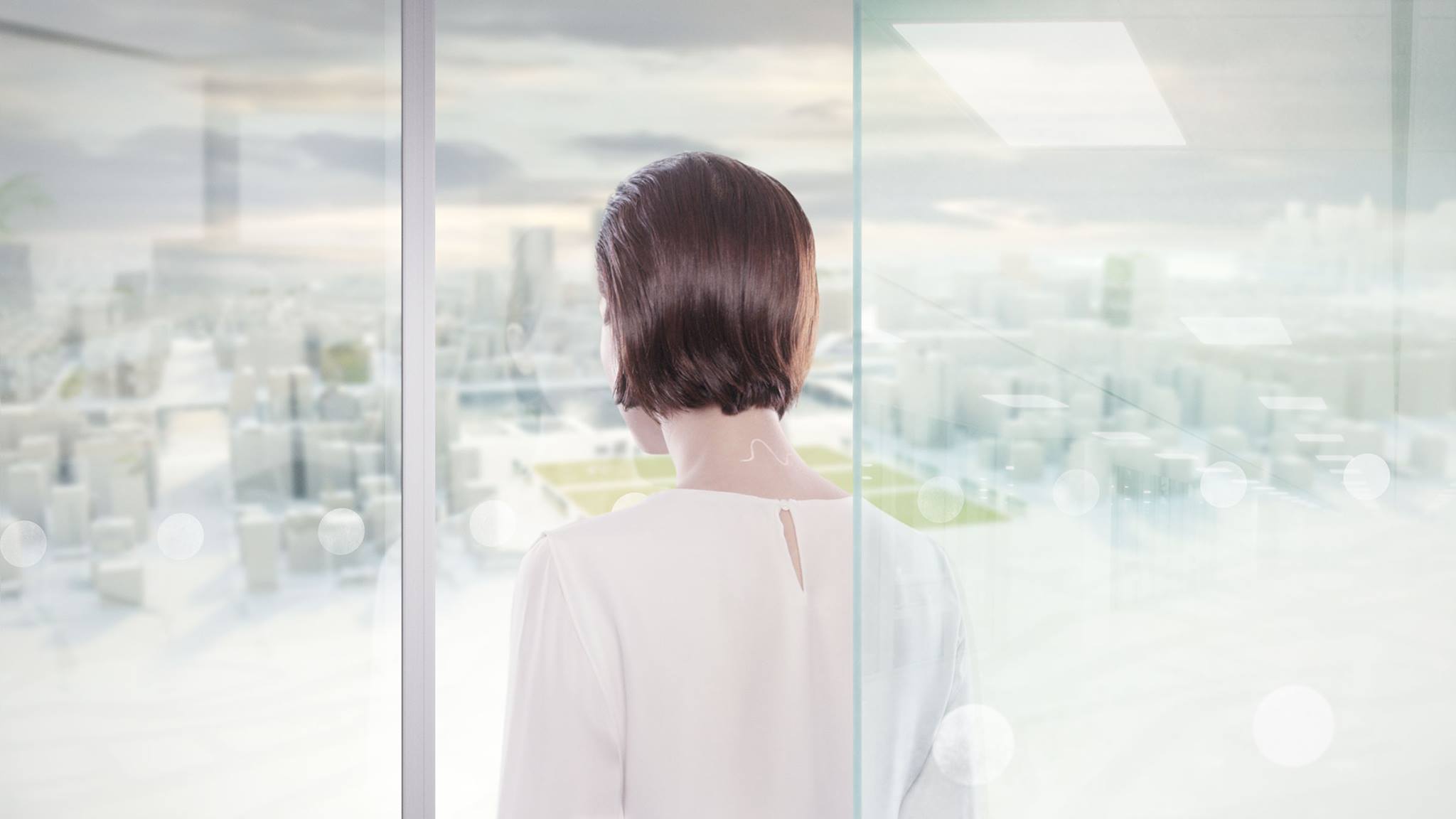
AutoItalia is currently run by Kate Cooper, Marianne Forrest and Marleen Boschen with production assistance from Edward Gillman.
Can you tell me about the origins of the project and how you got it started? Was creating a cross-platform an intention from the very beginning, or a need that took shape at a later stage?
Auto Italia began in 2007 when a group of recent fine art graduates began working together to create space to show the work of their peers as well as their own. It was borne out of a desire to try and create a space for artists to take control of their own means of production and distribution – to work in autonomous ways. Initially working out of squatted and then donated spaces, gaining access to these unusual and often really large empty buildings meant we were able to experiment and try things out on a really big scale – testing what could be possible and questioning what was “expected” in the aesthetics of an artist-led space. Since the beginning there has always been an interest in pushing formats and trying out new strategies for making art.
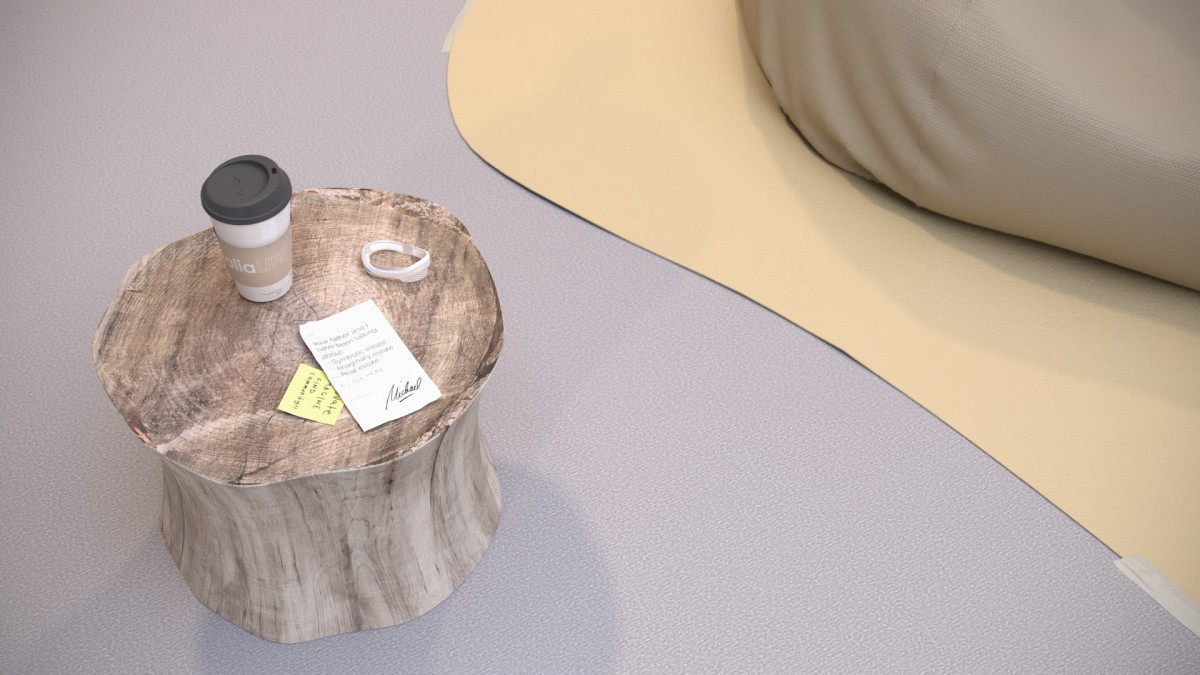 Meet Z (2014).
Meet Z (2014).
Image courtesy of Auto Italia and the artists.
Which criteria do you follow to select the artists you work with?
The projects of Auto Italia have always been led by the artists involved. The artists working within Auto Italia shape the programme through collaborative research and development of ideas and formats. Historically, Auto Italia’s work has followed some clearly defined paths, particularly around the politics of self organisation, gender, performance, and technology. Our projects always aim to create new opportunities for collaborative practice and artistic production, inviting individuals from wider discourses of cultural and artistic production to be take part in this work with us. In doing so, we aim to create spaces and platforms which can offer alternative ways of working and challenge the “norms” of cultural production.
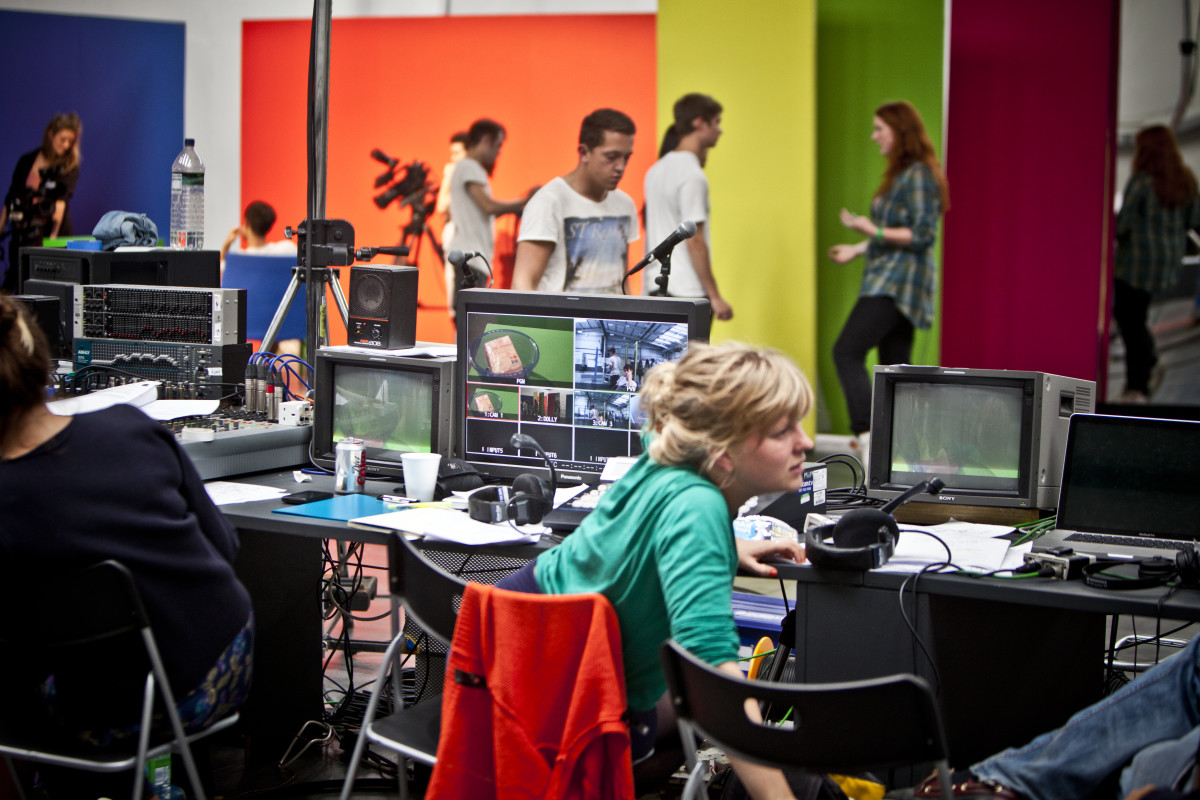 Auto Italia LIVE, Episode II: Cosmosis (2011).
Auto Italia LIVE, Episode II: Cosmosis (2011).
Image courtesy of Auto Italia and the artists; photograph: Ryan McNamara.
Let’ s talk a little about Auto Italia LIVE. It was an artist-run TV series performed before a studio audience and broadcast live over the web. What is the idea behind the urgency to investigate the role of TV within the contemporary digital scenario? Was it difficult to reach the audience by using broadcast media platforms?
Auto Italia LIVE was an artist-run TV show which began in 2010, with nine hour-long episodes produced between then and 2012. Working in this way in 2010, it was a really interesting moment to explore how artists might be able to take control of their own means of distribution, and to respond to the historical precedent of artists using broadcast media in a new way, thinking what making and broadcasting online might allow both for individual artists’ practices, but in the wider sense of a collaboratively produced episode.
The entire crew was made up of artists, many learning the skills necessary to make the project work as we went along. Livestreaming functionality wasn’t as it is now – there wasn’t an immediately clear way to live broadcast online and so the structures we needed to create became an integral part of that project. We worked with a range of different artists across the different episodes, but many of them were a part of them all and you can really see the development both in the type of work being produced in front of the camera, and the technical confidence growing behind it.
We were also very aware that although we were making “television”, we were making it for people’s laptops; unless you were in the live studio audience, the only way to see the productions was either live or on Vimeo. This shaped the content in different ways, but also was exciting in the potential for reaching new audiences, especially as live broadcasting was a new thing for most of the artists we were collaborating with and they had to think what it might mean for their practice.
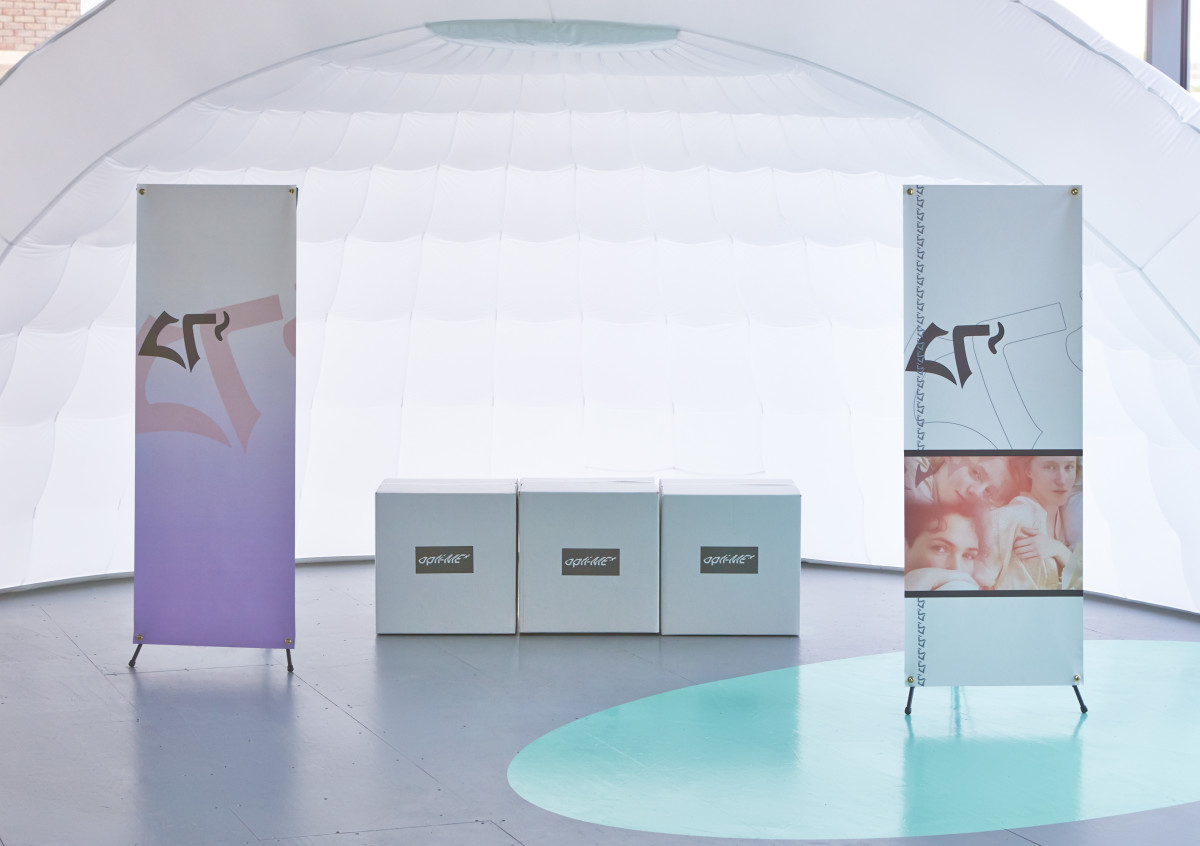 opti-Me* (2014). Installation view at Auto Italia, London.
opti-Me* (2014). Installation view at Auto Italia, London.
Image courtesy of Auto Italia and the artists; photograph: Theo Cook.
Has your «curatorial» vision changed over the years?
It’s interesting that you’ve proposed we have a “curatorial vision”, which is something we don’t often think about in these terms. The exciting thing about Auto Italia is that it is artist led and is in itself a studio practice, a network of people, sometimes a physical space, an online space, a commissioning body and a group that can also receive commissions. This sometimes amorphous way of existing can be really exciting in opening up new possibilities for working on projects. As our research develops within Auto Italia, so too do our projects. In fact, it’s quite rare that we would do something that didn’t owe at least part of its conception to previous work or conversations and in this way things tend to link back in to our core lines of research at any time.
In 2015, for example, we’ve been developing our On Coping project. The work began in response to an invitation to produce new work at Ithuba Arts Fund in Johannesburg, part of a British Council initiative. We began to explore ideas of “coping” both as necessary strategy for artists but also as potential way to access different modes of working. A lot of research through the project has looked at ideas of prophecy, tarot, trend forecasting and refusal of labour, all the while grounded in a wider question of working and producing within cities such as London and Johannesburg and what these locales mean for and offer to creative workers. The project has been developed and extended to iterations shown in Nottingham, Bologna, in Sleek Magazine and in Liverpool – each time the format and form shifts with manifestations as a billboard, a performance, a video, an editorial, an exhibition and a collective retreat. It’s really exciting to be working in these ways that embrace shifting formats and exploring potential in a variety of ways; the projects constantly shifting and being shaped by the collaborators who come on board at each stage.
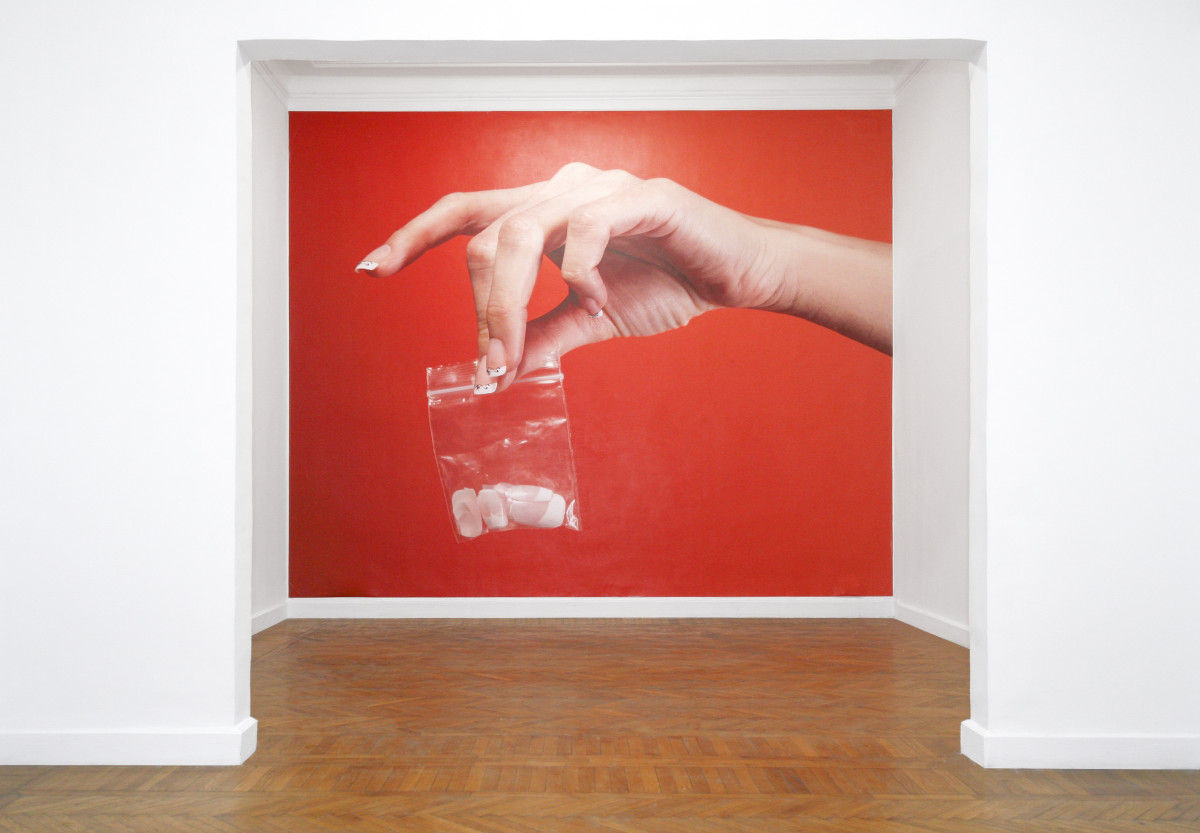 Viewing Copy (2014). Installation view at Contemporary Image Collective, Cairo.
Viewing Copy (2014). Installation view at Contemporary Image Collective, Cairo.
Image courtesy of Auto Italia and the artists.
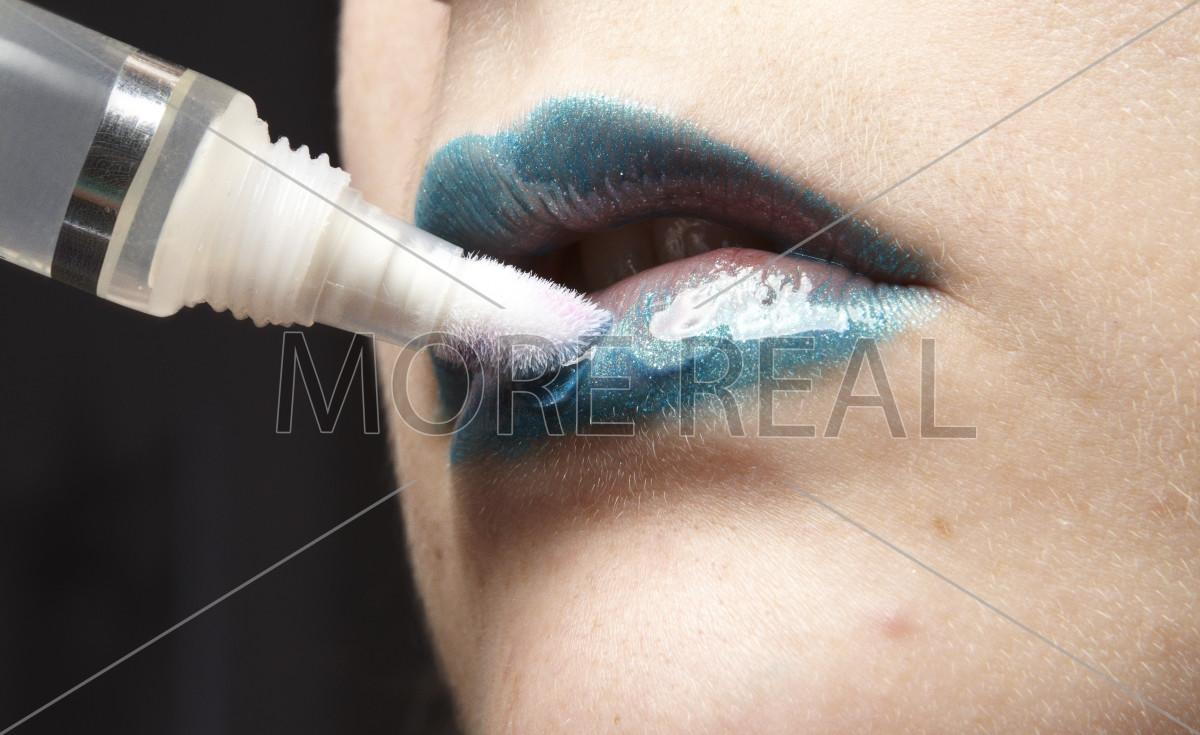 My Skin Is At War With A World of Data (2012)
My Skin Is At War With A World of Data (2012)
Image courtesy of Auto Italia and the artists.
«Incorporate me» is a very interesting project that explores the complex dynamics occurring in digital environments. The show featured works by The Bernadette Corporation, Maja Cule, Mika Tajima, New Humans, Artie Vierkant and yours, of course.
What is the common denominator at the base of these works?
Incorporate Me was an exhibition conceived of and curated by Robin Lynch as part of the CCS Bard Graduate Thesis Show. At the heart of the exhibition was thinking about these tensions between the soothing and stimulating aspects of our relationships with screens and online activity, and the concurrent exhausting effects – the physical toll these cycles can take.
Robin was interested in showing the My Skin Is At War With A World of Data project, a collaboration with Andrew Kerton and Jess Wiesner that was originally commissioned by Artissima in 2012. It’s interesting that a lot of the themes in that piece still feel really relevant and useful to discuss and interrogate, and I think having the work positioned against the practices of the other artists in the show opened up new ways of reading and responding to it. At the heart of the work was an interest in exploring physical impact and reaction to continuous digital production and engagement – the blurring of these spaces and the unacknowledged labour at work.
Something else that we’ve been increasingly thinking about in the past 12 months with Auto Italia taking on more international collaborations, is the tricky exchange that goes into producing these show that we’re not able to actually go to. Projects or installs develop over Sketchup, with rough files or sketches sent back and forth and an enormous trust placed in the hands of the team installing the work. Removing even this basic physicality that is usually there with projects has been something that has been important for us to explore and question – asking what it is about this “digital production” that feels exciting and what feels prohibitive.
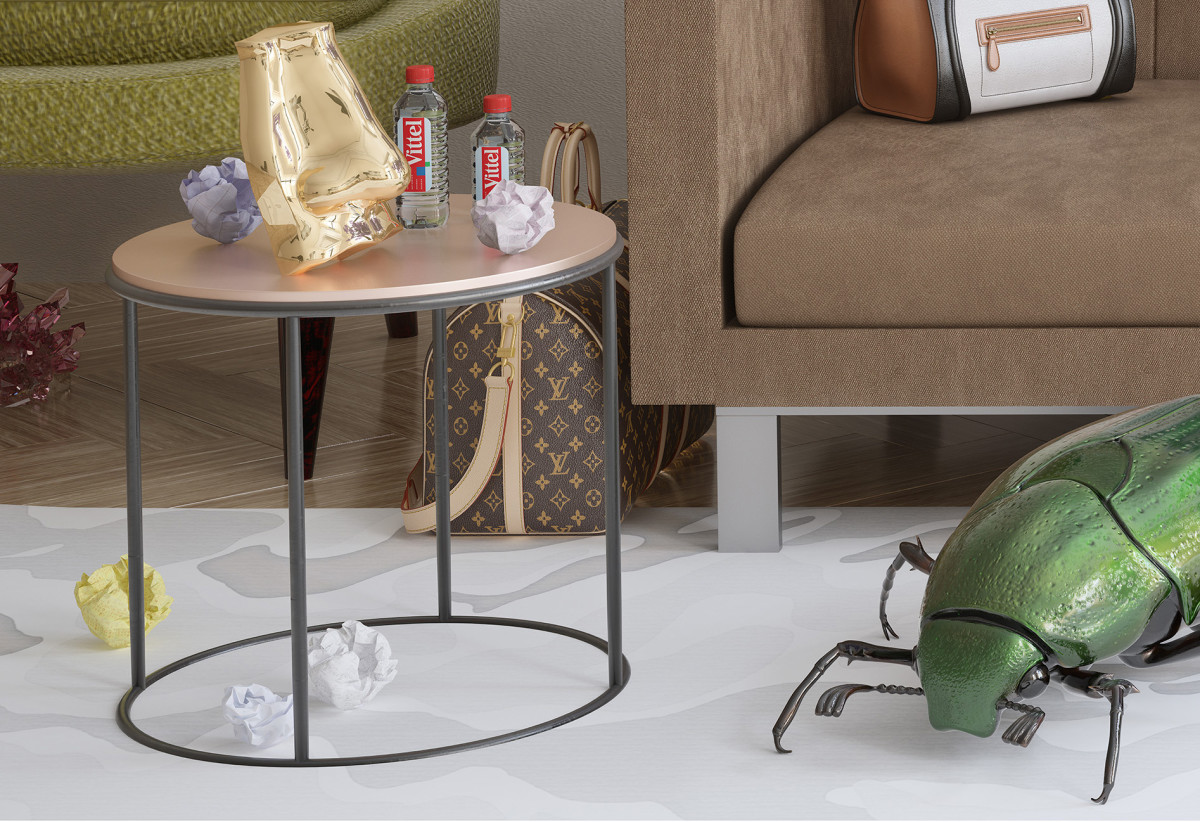 On Coping (2015).
On Coping (2015).
Image courtesy of Auto Italia and the artists.
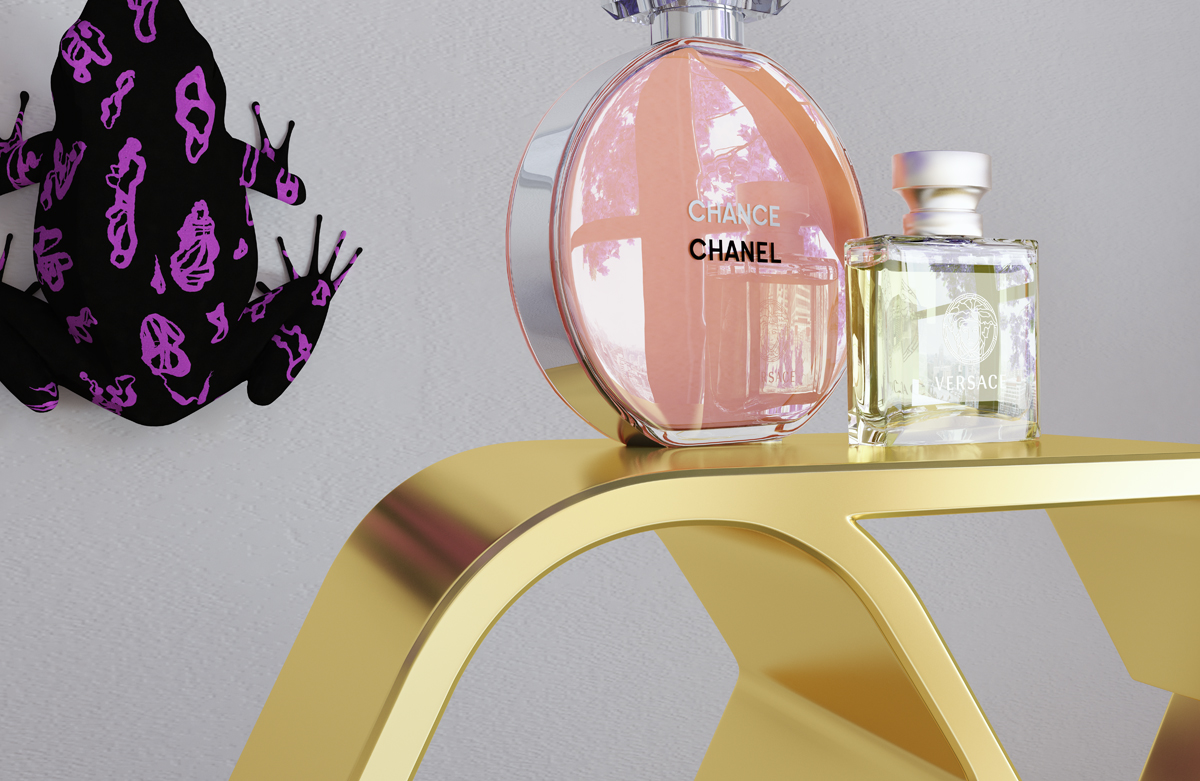 On Coping (2015).
On Coping (2015).
Image courtesy of Auto Italia and the artists.
What are your views about the way the art market operates today through online media?
To be honest, it often feels like the art market is such a separate thing that we don’t interact with very much – but thinking about this question made us reflect a bit on our opti-ME* project from 2014. The commission focused on developing responses to the trend of aligning ones artist “persona” as brand – asking what happens to artistic production as ones artist identity become capital. The conversations developed within this project with Ingo Nierman and Berlin agency Special Service dealt with questions arising out of the adaptation of commercial and market based industries within independent contexts. Opti-ME* for example interrogated the aesthetics and structures being utilised by independent producers that are recognizable as being adapted from commercial operations of cultural production. Maybe we should ask how we as artists may develop new proposals for models of working in the future that might rely on working with a market driven industry. The project highlighted the importance of recognising how this embedding of creative industries may offer a new strategy for future artistic production in austere and challenging financial climates.
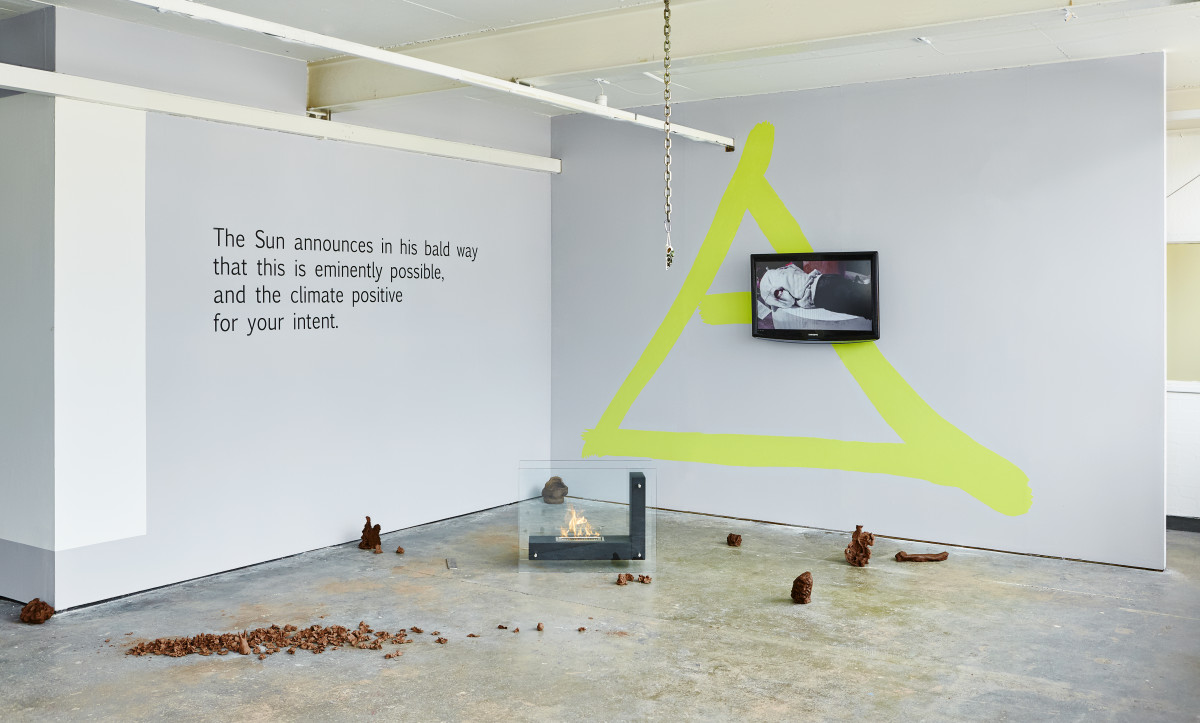 On Coping: A Reading for Liverpool (2015). Installation view at The Royal Standard, Liverpool.
On Coping: A Reading for Liverpool (2015). Installation view at The Royal Standard, Liverpool.
Image courtesy of Auto Italia and the artists; photograph: Theo Cook.
How would you like your practice -and your work as artists too- evolving in the future?
Especially working in the current political and economic conditions, we’re interested in interrogating what kind of art communities we want to be a part of, and ask who it is that is given permission to make art? How can artists be supported? In the future will there even be any art schools and who will be running our art spaces?
In terms of evolution, one thing that is certain is that we want it to evolve! We’re really excited about projects and partnerships we’ve got coming up internationally and elsewhere in the UK. It feels like an important time to be reaching outside of London and making much wider networks; with space at such a premium here the is city closing in and forcing out and we’re trying to navigate this and find new spaces for experimentation.
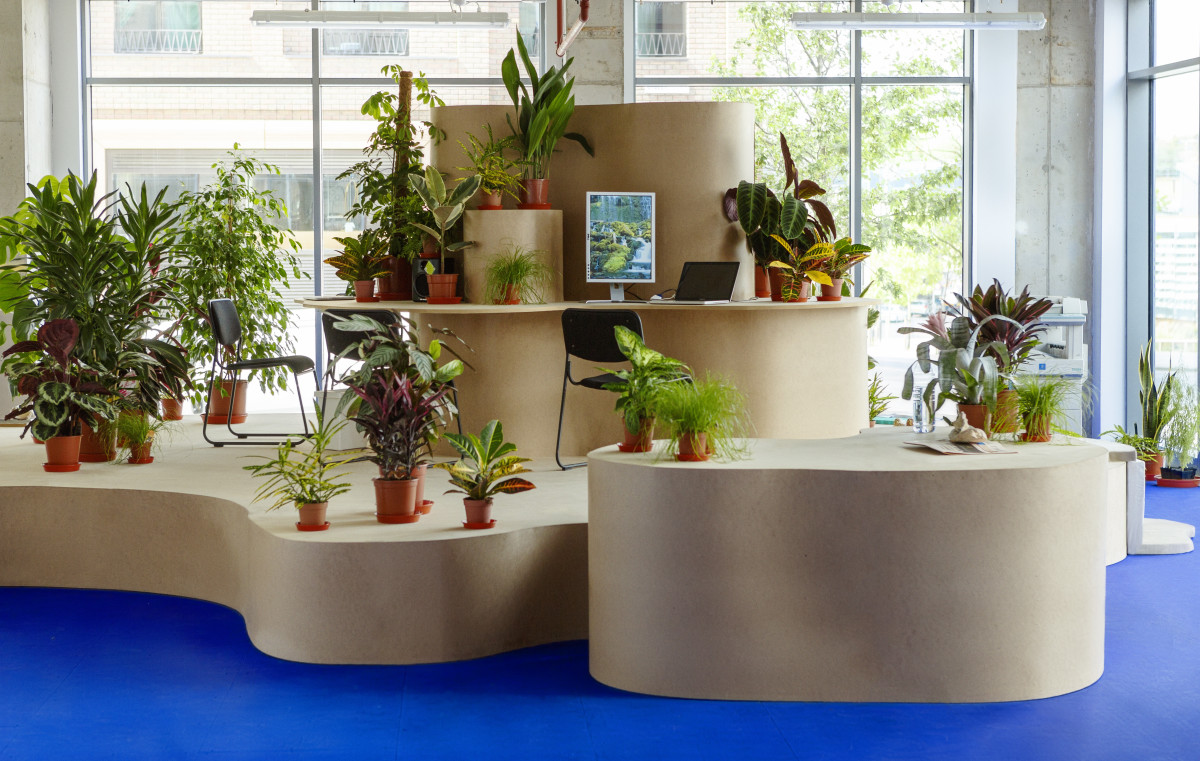 Recent Work by Artists (2013). Installation view at Auto Italia, London.
Recent Work by Artists (2013). Installation view at Auto Italia, London.
Image courtesy of Auto Italia and the artists; photograph: Theo Cook.
What are you working on at the moment?
We mentioned the most recent iteration of On Coping – presented in Liverpool as exhibition/event series/artists’ retreat at The Royal Standard, and working together to expand the project with contributions from Marleen Boschen & Charles Pryor, CUSS Group, Ruth Angel Edwards, Louisa Martin, Jaakko Pallasvuo, Emily Pope, Billy Howard Price and Erica Scourti. This has been a really interesting project and development of ideas and research and we’re excited to develop these connections and conversations further. We’ve also just had a new realization of the Meet Z online project included in group show In The City at Kunstlerhaus Bremen which was an interesting opportunity for us to transform a digital work into a physical installation.
Looking forward to 2016, we’re launching a new London-based project space and accompanying programme, as well as working on invitations to show work internationally.
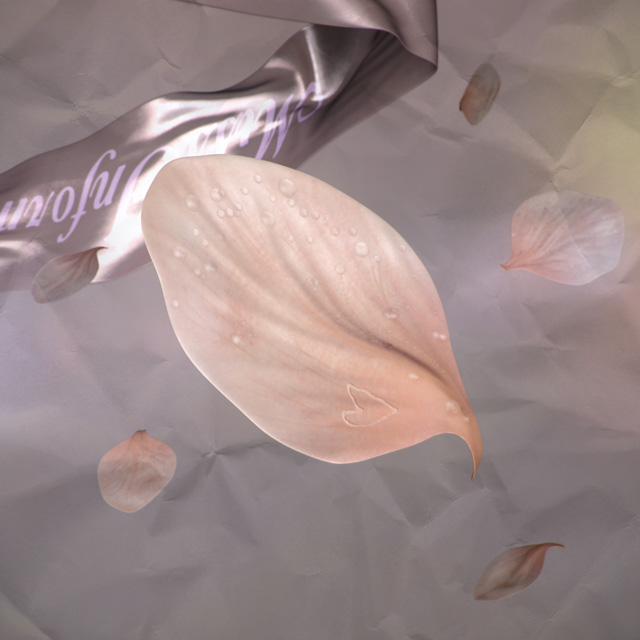 POLYMYTH x Miss Information (2014).
POLYMYTH x Miss Information (2014).
Image courtesy of Auto Italia and Pablo Jones-Soler.
www.autoitaliasoutheast.org
Interview by Marialuisa Pastò
O Fluxo, March 2016
